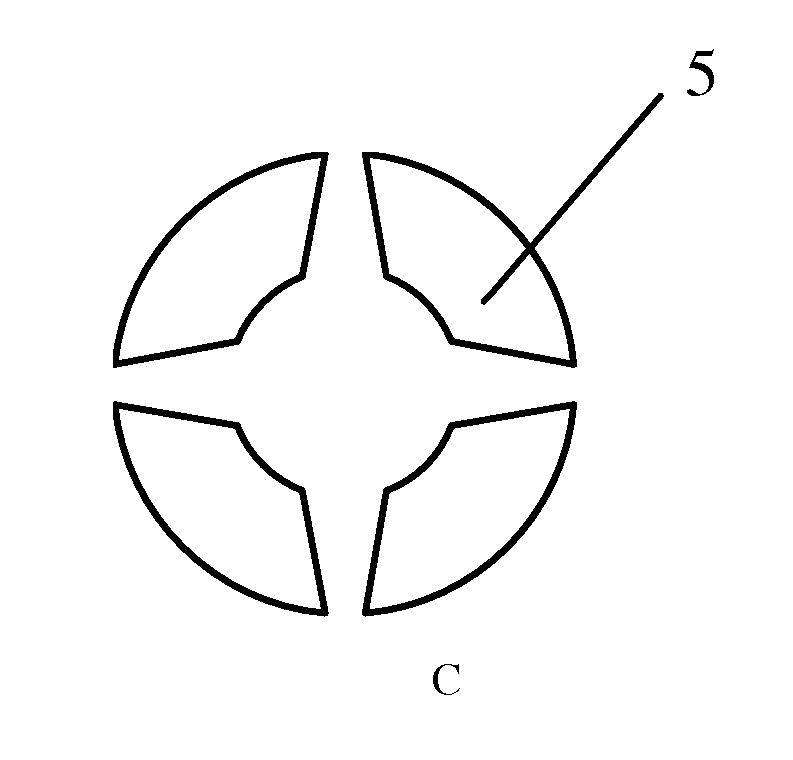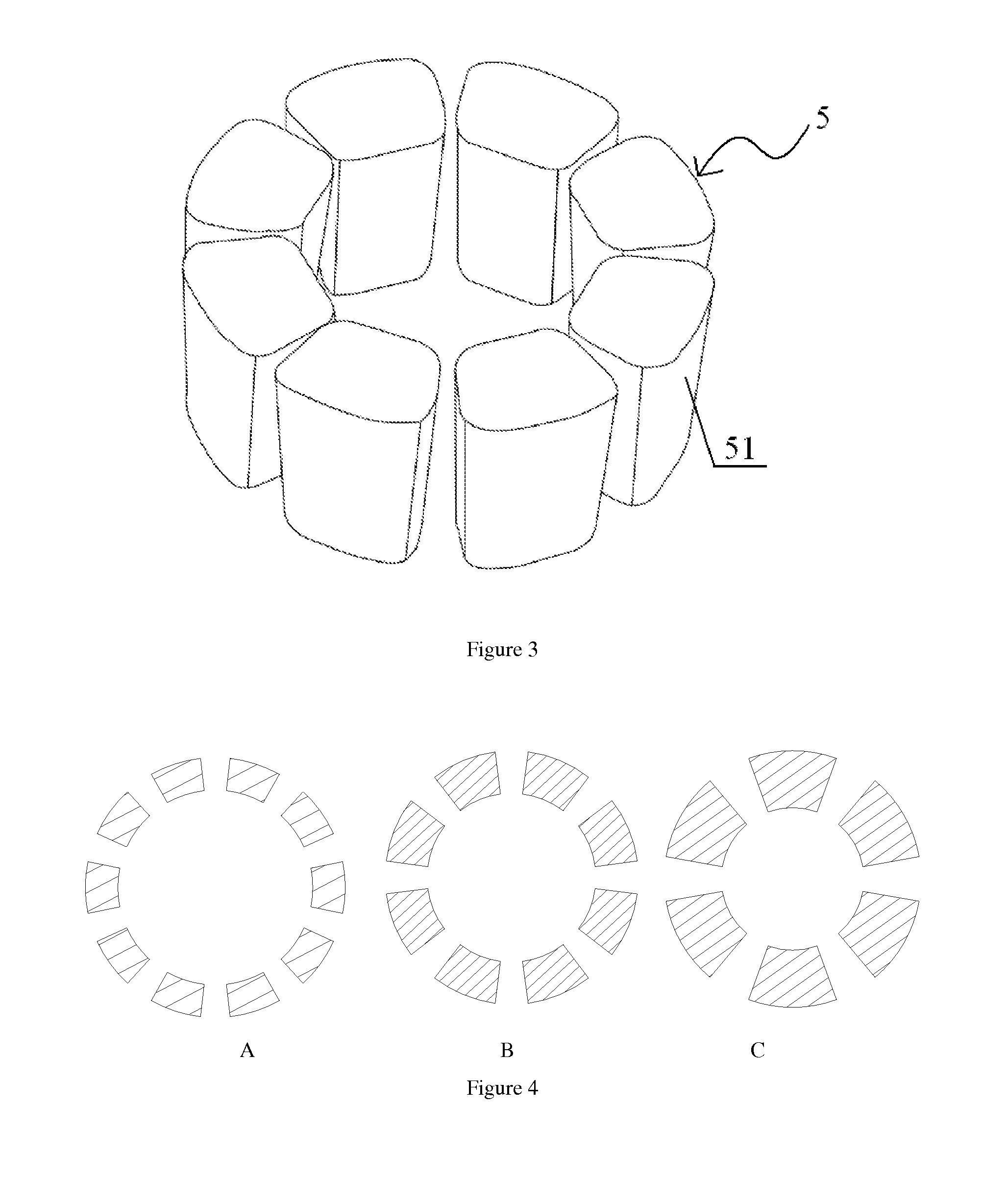Microfluidic device and its use for positioning of cells or organisms
a microfluidic device and positioning technology, which is applied in the field of microfluidic devices and its use for positioning cells or organisms, can solve the problems of difficult to maintain a hemostasis with stable temperature and humidity, labor-intensive conventional methods, and poor integration of microdevices
- Summary
- Abstract
- Description
- Claims
- Application Information
AI Technical Summary
Benefits of technology
Problems solved by technology
Method used
Image
Examples
example 2
Microfluidic Chips
[0060]As shown in FIG. 8, the difference between this exemplary embodiment and Example 1 lies in: there is one basal layer 7 connected to the microstructure layer 2; there is one oil-holding layer 8 connected to the cover layer 1, right above the positioning well 6 and inlet pool 4. Basal layer 7 is made of glass and oil-holding layer 8 is made of PDMS. Oil-holding layer 8 is a PDMS slice whose size exactly matches with cover layer 1 with a hole to hold mineral oil.
example 3
In Vitro Fertilization
[0061]This exemplary example utilized the microdevice in Example 2 to realize the integration of single oocyte positioning, mouse sperm motility screening, in vitro fertilization, medium replacement, early mouse embryo culturing, embryo in situ staining and embryo retrieval. Using the microfluidic device included the following steps:
[0062]1) Before use the entire device was cleaned with ultrasonic washer and sterilized by UV (30 min). Then the device was oxygen plasma treated to improve the hydrophilicity. The specific procedure of oxygen plasma treatment was: vacuum the chamber for 1 min, inject oxygen flow at 0.1 MPa for 1 min, and turn on the plasma power after the oxygen flow stops for 5 s. After the glow was stable for 15 s, turn the power off and ventilate. The entire microfluidic device was prefilled with HTF (Human tubal fluid).
[0063]2) Mouse single oocyte positioning: every denuded oocyte was directly pipetted into microstructure 5 inside positioning w...
example 4
Application in Determining how Glial Cells Affect Neurons
[0070]The microfluidic device in this exemplary embodiment, similar to the one in
[0071]Example 2, comprises four layers: basal layer, microstructure layer, cover layer and oil-holding layer (as shown in FIG. 12A). The difference exists that there is only one microstructure in this device and this microstructure comprises four columns. The cross-section of each column is arc-shaped and a wider-inside-narrower-outside gap exists between each two adjacent columns to guide the growth of neural synapses (FIGS. 12B and 12C). The microstructure is 250 μm high, and has an inner diameter of 4 mm and outer diameter 4.2 mm. The gap structure has an inner arc length of 50 μm and outer arc length 30 μm.
[0072]Studying how different glial cells affect neurons with the microfluidic device included the following steps:
[0073]1) Device pretreatment: the same as in Example 3, the entire device is cleaned with ultrasonic washer and sterilized by U...
PUM
 Login to View More
Login to View More Abstract
Description
Claims
Application Information
 Login to View More
Login to View More - R&D
- Intellectual Property
- Life Sciences
- Materials
- Tech Scout
- Unparalleled Data Quality
- Higher Quality Content
- 60% Fewer Hallucinations
Browse by: Latest US Patents, China's latest patents, Technical Efficacy Thesaurus, Application Domain, Technology Topic, Popular Technical Reports.
© 2025 PatSnap. All rights reserved.Legal|Privacy policy|Modern Slavery Act Transparency Statement|Sitemap|About US| Contact US: help@patsnap.com



